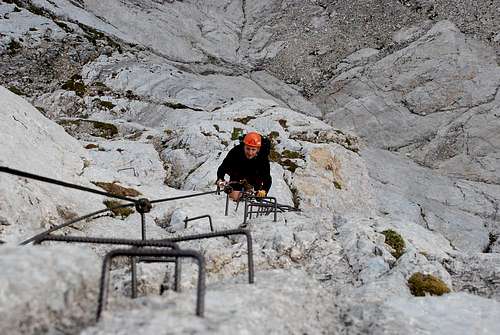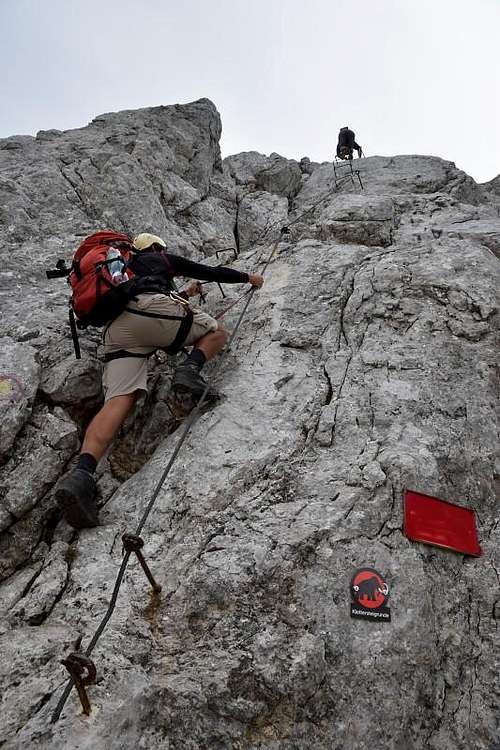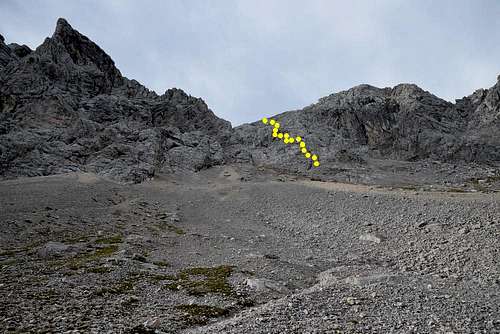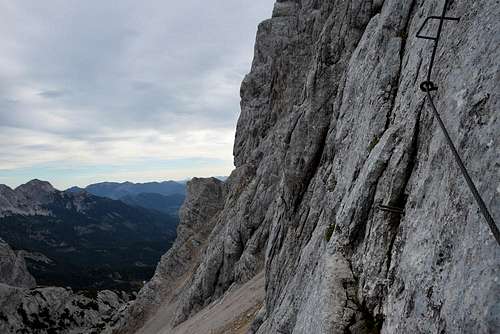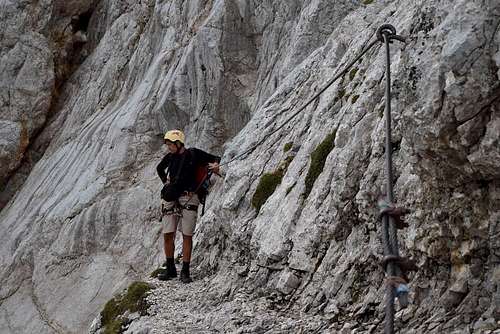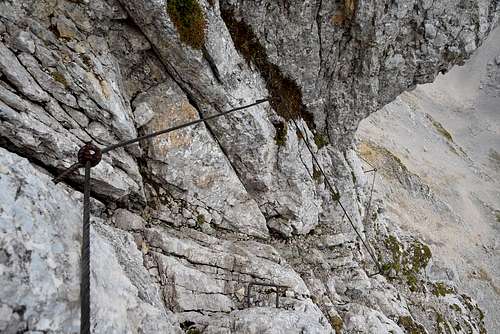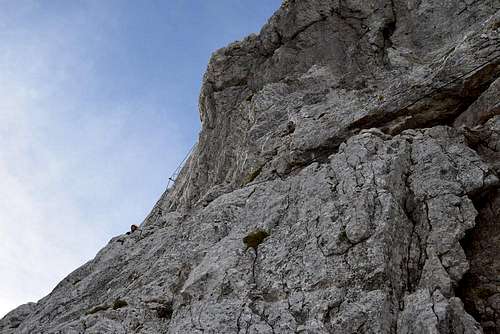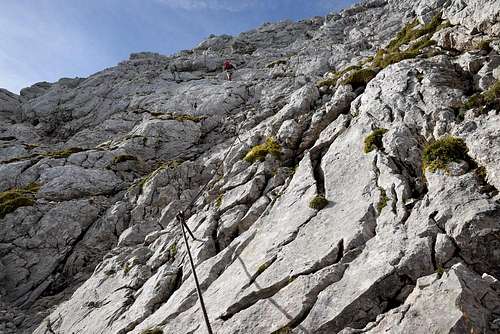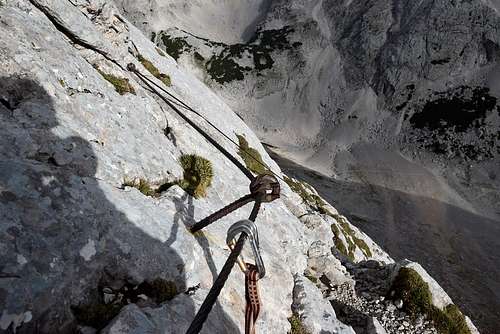|
|
Route |
|---|---|
|
|
47.69540°N / 14.06190°E |
|
|
Via Ferrata |
|
|
Spring, Summer, Fall |
|
|
B (on the A-F scale) |
|
|
Overview
Stodertaler Klettersteig is a very nice, low difficult via ferrata route heading the second highest summit of the Totes Gebirge – Spitzmauer.
The route overcomes about 250 metres high north face of the massif of Spitzmauer and leads in the lowest point of the face. The route was built in 1988 as a short cut to the summit, normal route goes around the whole massif of Spitzmauer and Weitgrubenkopf and is much longer. The via ferrata route compresses the period of ascent by about an hour. On the other hand the normal route offers a wonderful scenery of limestone kettles and peaks and it’s a good choice for a descent from Spitzmauer.
Stodertaler Klettersteig is suitable for the first meeting with a via ferrata route – for via ferrata beginners. A vertigo resistence and a sure-footedness is certainly the indispensable precondition.
Getting There
From A9-highway you have to take the Exit 36 St. Pankraz or Exit 48 Windischgarsten. Then take the road to Hinterstoder. There is a car park on the right side of the road at the end of Hinterstoder, next to the house called Johannishof. A detailed description of the ascent to the ravine Klinserschlucht you can find on a description of the ascent on Spitzmauer.Route Description
The route overcomes about 200 metres high north face of Spitzmauer in the lowest point of the face. The lenght of the route is about 250 metres. The level of difficulty of the via ferrata route is rated B by the Austrian scale – low difficult.
Trailhead is in the highest point of the steep scree slope above the ravine Klinserschlucht at the altitude about 2000 metres above the sea level. It takes about 1:30 hours from Prielschutz hut to the trailhead. A detailed description of the ascent to the ravine Klinserschlucht you can find on a description of the ascent on Spitzmauer.
The via ferrata route alternately overcomes some steep rock slabs and rock ledges and ends in the wide flat saddle between the summits of Spitzmauer and Weitgrubenkopf at the altitude about 2200 metres. The lower two thirds of the route lead in the almost vertical face, the upper, last third of the route is easier and leads in the steep rock terrain.
The whole route is well protected by steel rungs and steel cables and takes about 30 minutes.
From the end of the via ferrata in the flat saddle leads an easy route to the summit of Spitzmauer. It takes about 30 minutes to the top.
Essential Gear
- complete via ferrata equipment (via ferrata set, a helmet, gloves) and good shoes
- the route isn’t appropriate for people sufferring from vertigo
- the route leads in the north face – pay attention to wetness and frost and to the rests of snow, particularly in the early summer
External Links
- Stodertaler Klettersteig (in German only)
- Prielschutz hut (1420m)
Maps:
- Kompass: WK 19 – Almtal – Totes Gebirge
- On-line: www.austrianmap.at or www.kompass.de


